中国组织工程研究 ›› 2013, Vol. 17 ›› Issue (32): 5806-5812.doi: 10.3969/j.issn.2095-4344.2013.32.010
• 胚胎干细胞 embryonic stem cells • 上一篇 下一篇
人类胚胎来源成肌细胞的培养和鉴定
刘桂英1,杨立业2,3,李文玉2,郑佳坤3,陈 强2
- 潮州市中心医院,1口腔科,2检验医学中心,3神经外科,广东省潮州市 521021
Culture and identification of human embryo-derived myoblasts
Liu Gui-ying1, Yang Li-ye2, 3, Li Wen-yu2, Zheng Jia-kun3, Chen Qiang2
- 1Department of Stomatology, Chaozhou Central Hospital, Chaozhou 521021, Guangdong Province, China
2Lab Medical Center, Chaozhou Central Hospital, Chaozhou 521021, Guangdong Province, China
3Department of Neurosurgery, Chaozhou Central Hospital, Chaozhou 521021, Guangdong Province, China
摘要:
背景:人类胚胎骨骼肌含有成肌细胞,其在体外条件下的培养及在体外能否融合形成肌管,以及表达的相应的标志物,目前尚不明确。 目的:验证源于人类胚胎骨骼肌的成肌细胞在体外条件下的培养条件,能否在体外融合形成肌管,能否表达神经细胞的标志物。 方法:采用组织块培养法对人类胚胎肌肉来源的成肌细胞进行原代培养,以免疫细胞化学染色检测培养的细胞肌肉细胞标志物desmin、myogenin、平滑肌肌动蛋白、myosin和神经细胞标志物β-tubulin Ⅲ、nestin、neurofilament 200 (NF200)、胶质纤维酸性蛋白的表达。 结果与结论:从人类胚胎肌肉组织中成功培养出成肌细胞,表达成肌细胞的标志物desmin和myogenin,同时也表达神经元特异性烯醇化酶、nestin和NF200,细胞能够在体外融合形成含有多个细胞核的肌管,融合的肌管可以表达NF200、β-tubulin Ⅲ和胶质纤维酸性蛋白等神经细胞的标志物。结果证实,人类胚胎肌肉来源的成肌细胞能够同时表达神经细胞和肌肉细胞的标志物,培养的成肌细胞和肌管细胞表达神经元特异性烯醇化酶、β-tubulin Ⅲ、nestin、NF 200和胶质纤维酸性蛋白。说明这几种神经细胞标志物不能用于肌肉来源的细胞向神经细胞跨分化的鉴定研究。
中图分类号:
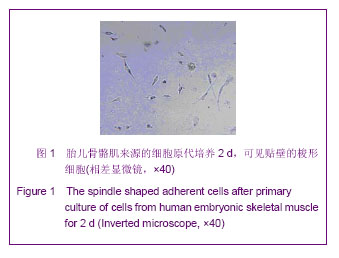
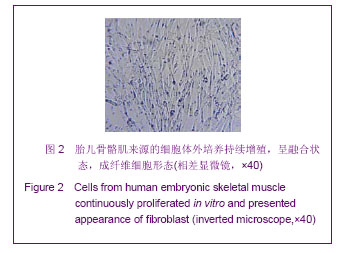

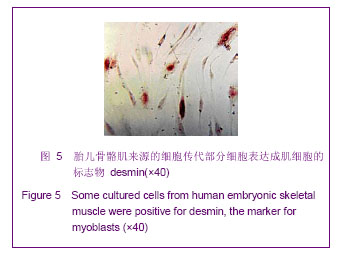
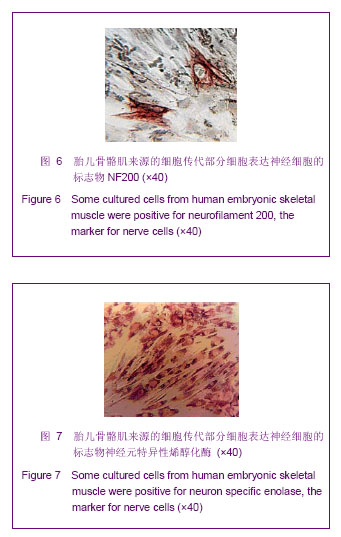
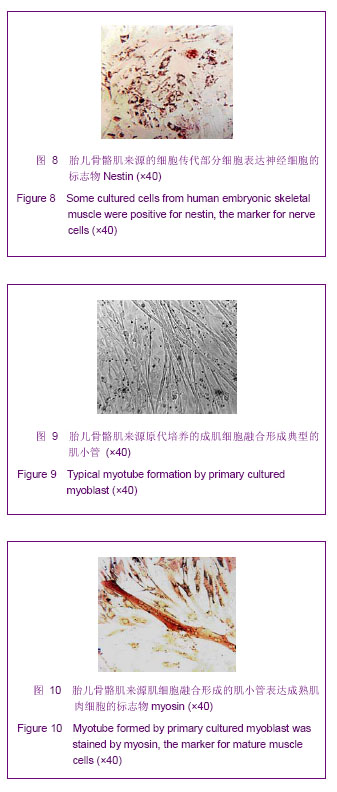
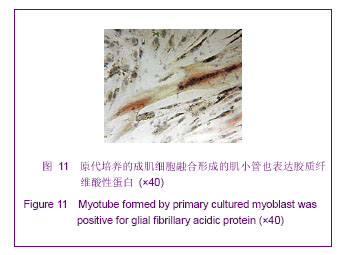
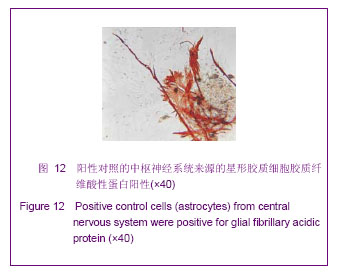
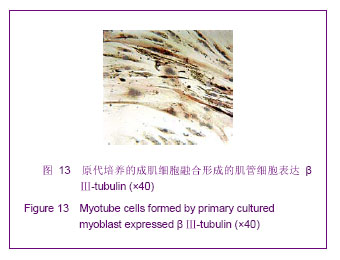
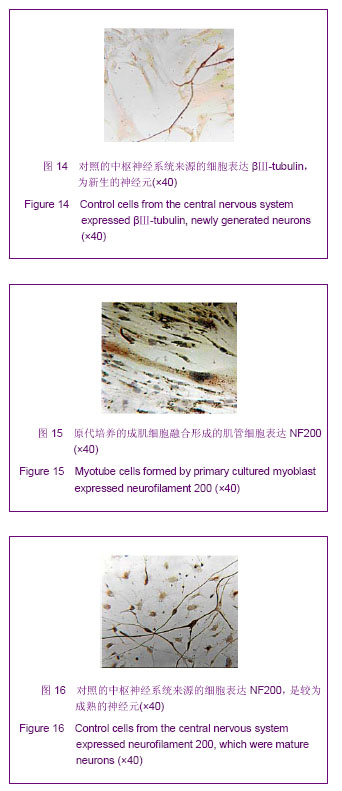
.jpg)